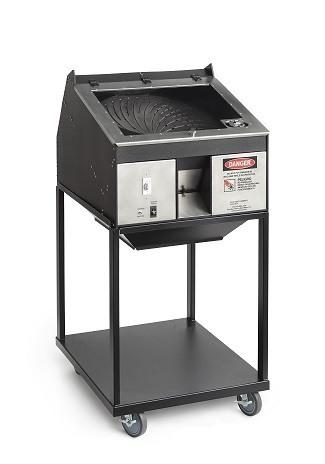Bruce Kennedy ~ WeedWorthy ~
One inventor-turned-businessman says innovators are finding a market for their ideas as the legal marijuana sector concentrates on its bottom line.
~
As the legal cannabis industry gains national momentum, it’s attracting people who are trying to develop, build and perfect machinery and techniques that will make the marijuana sector more efficient and profitable.
Of course, one of the big advantages this cadre of current and would-be inventors has over their black market predecessors is an ability to function in the open, in direct contact with each other, without fear of prosecution.
Cullen Raichart, CEO of San Diego-based Greenbroz Inc., heads a product development and equipment manufacturing company geared expressly for the cannabis industry. And he recognizes that his business would have been untenable just a few decades ago.
Raichart’s father grew cannabis and introduced him to plant cultivation. Later on, after working with computer systems and despite having no formal mechanical engineering background, Cullen found he was good at developing devices related to cannabis harvesting.
“I can see something and understand exactly how it fits together,” he says, “I’ve always been inventive and always seen the solution to problems – so this industry is a great opportunity for me, because there are a lot of problems to be solved.”
After watching a friend hand-sift his “trim”, the marijuana leaves removed from the buds during the trimming process and later converted into cannabis oil and other products, Raichart came up with his first piece of cannabis-related equipment: a dry-sift tumbler.
The design, he says, was very effective but at first lacked a containment compartment, so his entire house would fill up with a cloud of “kief dust” (powder from the dried and extracted materials) whenever the machine was in use.
Cullen spent two years bringing his tumbler from the drawing board to reality, and later used the lessons learned during that experience to speed up the process when he developed an industrial cannabis trimmer.
“The trimmer took about three months for it to go from concept through to first design,” he says.
He started Greenbroz with his friend Aaron Turner in 2012 and sold their first trimmer at the end of 2013. After intensively seeking out funding and setting up their infrastructure, Greenbroz was able to officially open for business and by the end of 2014 – “our first real quarter of business,” he says – the company went into the black. Earlier this year they built a manufacturing facility, run by a fulltime staff of four.
Raichart says there are opportunities available for creative people trying to find solutions for the industrial challenges the cannabis industry now faces. Some of the sector’s ongoing technical problems, he notes, can be solved via easy adaptations of existing technologies – especially when it comes to the machinery needed for helping plants to grow and develop.
But there are specific challenges the cannabis industry must deal with, he says, especially when it comes to how the plant is treated after it’s been harvested. Over-handling harvested cannabis, for example, can reduce its THC content, making it less valuable.
“That’s why we concentrate in that (harvesting) space, because the opportunity is there, to take away the tedious tasks that exist in the industry.”
And as cannabis companies become more business-minded and business-oriented, Raichart says marijuana business owners are scrambling to better understand the economics behind their evolving industry – especially as cannabis prices drop and it becomes more cost-effective for producers to use machinery.
“People are trying to find efficiency,” he says, “but you can’t sacrifice quality; customers are discerning, there’s still a high expectation for quality. So you need equipment that produces high quality but gets you back that value. “
Eventually, says Raichart, he’d like Greenbroz to do for cannabis production what John Deere has done for farming, ranching and traditional agriculture: to help provide the opportunity for marijuana growers and producers to become more productive.
~





